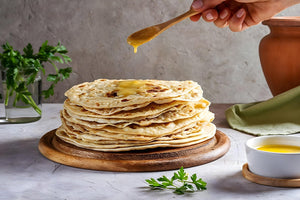
The Punganur Cow: A Dwarf Breed with Giant Benefits
India, known for its diverse and rich agricultural heritage, is home to various unique livestock breeds, each adapted to specific regions and climates. Among these, the Punganur cow stands out as one of the most remarkable. Originating from the Punganur region of Andhra Pradesh, this dwarf cattle breed is not only fascinating due to its size but also for its resilience and milk-producing capabilities.
Historical Background
The Punganur cow has a long history intertwined with the agrarian traditions of Southern India. Believed to have been developed over centuries, this breed was traditionally used by local farmers for milk production and as draught animals. Its small stature, combined with its ability to thrive on minimal resources, made it an ideal choice for the semi-arid conditions of Andhra Pradesh.
Physical Characteristics
One of the most striking features of the Punganur cow is its diminutive size. Standing at just 70-90 cm tall and weighing between 115-200 kg, it is one of the smallest cattle breeds in the world. This small size, however, does not compromise its functionality or health.
- Color and Coat: Punganur cows typically have a white or light grey coat, although variations with red or brown patches are also common.
- Build: Despite their small size, these cows have a well-proportioned and sturdy build. They possess a broad forehead, short horns, and a prominent hump, which is characteristic of Indian cattle.
- Milk Production: One of the most valued traits of the Punganur cow is its milk production. On average, a Punganur cow can yield about 3-5 liters of milk per day. This milk is highly nutritious, rich in fat, and A2 beta-casein protein, making it beneficial for health.
Adaptability and Resilience
The Punganur cow is highly adaptable to harsh climatic conditions, which is a testament to its resilience. It can survive on minimal feed and water, making it an ideal breed for regions with scarce resources. Its ability to graze on dry, coarse vegetation and thrive in semi-arid climates highlights its hardy nature.
Cultural Significance
The Punganur cow also holds a significant place in religious and ritualistic practices. In many Hindu households, cows are regarded as sacred and are worshiped, and the Punganur cow is no exception. During festivals like Pongal and other harvest celebrations, these cows are adorned and honored, symbolizing gratitude for their contribution to the household’s sustenance and prosperity.
Conservation Efforts
Despite its numerous advantages, the Punganur cow faces the threat of extinction due to various factors, including crossbreeding and changes in agricultural practices. Recognizing this, several conservation efforts have been initiated by the government and non-governmental organizations. Breeding programs, awareness campaigns, and support to local farmers are some of the steps being taken to preserve this unique breed.
The Punganur cow is a remarkable example of nature’s ingenuity, combining efficiency, resilience, and productivity in a small package. Its significance extends beyond its economic value, representing a vital part of India's agricultural heritage. Conservation efforts are crucial to ensure that this breed continues to thrive and contribute to sustainable farming practices in the future.
As we look towards sustainable agriculture and livestock management, the Punganur cow offers valuable lessons in adaptability and resource efficiency. By preserving and promoting such indigenous breeds, we not only honor our cultural heritage but also move towards a more sustainable agricultural future.




